Who Decides Which Books
are Living Anyway?
Miss Mason’s Guidelines for Living Books
“One more thing is of vital importance; children must have books, living books. The best is not too good for them; anything less than the best is not good enough."
-Charlotte Mason
Before becoming a homeschooling mama, I was a school teacher for 12 years. Although there are many things I’ve had to relearn as an educator with Charlotte Mason (CM), there are also many things I was on the same page with her already. One example was using living literature in my classroom and at home with my daughter. I just didn’t call it that. I called it quality literature. Literature that moved me, that inspired me, that made me think and ponder. Literature that gave words to my feelings.
We know that living books* are used in almost every school subject in a CM education, which is one of the methods that drew me to her philosophy in the first place. Once we “meet” Miss Mason, we hear the term “living books” everywhere! We see lists of living books and websites recommending living books and listen to podcasts to learn what living books are. There’s an abundance of info out there on living books. Great, right?
Not exactly.
Here are a few problems I ran into:
- Many of the living book suggestions were of books no longer in publication so they were extremely hard to find in the library or cost over $100.
- They included many of the classics (which is a good thing) but EXCLUDED many modern books.
- The majority of the book recommendations lacked racial and cultural diversity.
Because of all these problems, I began to doubt my favorite titles and wonder if they were ever really “living”, even though I was a teacher who had been using quality literature for years. I mean, many of my faves were modern, multicultural literature that was rarely found on CM living book lists (at the time).
But after a while, I started to ask myself: Who Decides What’s a Living Book Anyway?
If Miss Mason was the one who coined the term “living books” and it is one of the most vital components of her philosophy, then it would be wise as CM homeschoolers to understand her guidelines for living books.
And where do we find these guidelines? Her volumes, of course.
MISS MASON’S GUIDELINES FOR LIVING BOOKS
SHOULD INSPIRE STUDENTS WITH IDEAS
“Education is a life. That life is sustained on ideas. Ideas are of spiritual origin, and God has made us so that we get them chiefly as we convey them to one another, whether by word of mouth, written page, Scripture word, musical symphony; but we must sustain a child’s inner life with ideas as we sustain his body with food.” (Vol 6)
MUST BE OF THE BEST QUALITY OF WRITING
“One more thing is of vital importance; children must have books, living books; the best are not too good for them; anything less than the best is not good enough; and if it is needful to exercise economy, let go everything that belongs to soft and luxurious living before letting go the duty of supplying the books, and the frequent changes of books, which are necessary for the constant stimulation of the child’s intellectual life.” (Vol 2)
MUST BE INSPIRING WELL-TOLD TALES WITH LITERARY POWER (NOT TWADDLE** OR DILUTED)
“For the children? They must grow up upon the best. There must never be a period in their lives when they are allowed to read or listen to twaddle or reading-made-easy. There is never a time when they are unequal to worthy thoughts, well put; inspiring tales, well told. Let Blake’s ‘Songs of Innocence’ represent their standard in poetry; De Foe and Stevenson, in prose; and we shall train a race of readers who will demand literature—that is, the fit and beautiful expression of inspiring ideas and pictures of life. (Vol 2)
“I am speaking now of his lesson-books, which are all too apt to be written in a style of insufferable twaddle, probably because they are written by persons who have never chanced to meet a child. All who know children know that they do not talk twaddle and do not like it, and prefer that which appeals to their understanding” (Vol. 1).
“As for what are called children’s books, the children of educated parents are able to understand history written with literary power, and are not attracted by the twaddle of reading-made-easy little history books” (Vol. 1).
“…and all I maintain is, that had his reading been the sort of diluted twaddle which is commonly thrust upon children, it would have been impossible for him to cite passages a week, much less some two score years, after the reading.” (Vol 1)
“…weak literature for the children…put into the children’s hands lesson-books with pretty pictures and easy talk, almost as good as story-books; but we do not see that, after all, we are but giving the same little pills of knowledge in the form of a weak and copious diluent. Teachers, and even parents, who are careful enough about their children’s diet, are so reckless as to the sort of mental aliment offered to them, that I am exceedingly anxious to secure consideration for this question, of the lessons and literature proper for the little people.” (Vol 1)
SHOULD NOT BE SECOND-RATE, STALE OR PREDICTABLE
“It is not possible to repeat this too often or too emphatically, for perhaps we err more in this respect than any other in bringing up children. We feed them upon the white ashes out of which the last spark of the fire of original thought has long since died. We give them second-rate story books, with stale phrases, stale situations, shreds of other people’s thoughts, stalest of stale sentiments. They complain that they know how the story will end! But that is not all; they know how every dreary page will unwind itself” (Vol. 3).
CHILDREN MUST ENJOY WHAT THEY READ
“The children must enjoy the book. The ideas it holds must each make that sudden, delightful impact upon their minds, must cause that intellectual stir, which mark the inception of an idea,” (Vol 3)
However…
“That children like feeble and tedious…story books, does not at all prove that these are wholesome food; they like lollipops but cannot live upon them.” (Vol 6)
“Many who would not read even a brilliant novel of a certain type, sit down to read twaddle without scruple. Nothing is too scrappy, nothing is too weak to ‘pass the time!’ The ‘Scraps’ literature of railway bookstalls is symptomatic. We do not all read scraps, under whatever piquant title, but the locust-swarm of this class of literature points to the small reading power amongst us. The mischief begins in the nursery. No sooner can a child read at all than hosts of friendly people show their interest in him by a present of a ‘pretty book.’ A ‘pretty book’ is not necessarily a picture-book, but one in which the page is nicely broken up in talk or short paragraphs. Pretty books for the schoolroom age follow those for the nursery, and, nursery and schoolroom outgrown, we are ready for ‘Mudie’s’ lightest novels; the succession of ‘pretty books’ never fails us; we have no time for works of any intellectual fibre, and we have no more assimilating power than has the schoolgirl who feeds upon cheese-cakes” (Vol. 5).
“What manner of book will find its way with upheaving effect into the mind of an intelligent boy or girl? We need not ask what the girl or boy likes. She very often likes the twaddle of goody-goody story books, he likes condiments, highly-spiced tales of adventure. We are all capable of liking mental food of a poor quality and a titillating nature” (Vol. 3).
Let’s Sum it Up
A Living Book:
- Inspires ideas
- Moves you with its literary power
- Contains quality writing where learning & enjoyment are a natural result
- Is not stale or dry but comes alive, often through inspiring, well told narratives
Miss Mason talks more about living books throughout her 6 volumes but the aforementioned guidelines are a great place to start.
LIVING BOOKS DON’T JUST HAVE TO BE OLD CLASSICS
Children are born persons, with ideas, thoughts and wonderings. Living books provide the opportunity for our children to learn and connect with great ideas, people and topics throughout various subjects and time periods in more meaningful ways.
Be that as it may, a huge stumbling block is the common belief that living books can only be old classics.
Classics didn’t start off as classics.
Classics didn’t start off as classics. A classic is not a classic because it’s Eurocentric or because it’s old. Instead, it’s a classic because of its universal truths and with all the beauty, as well as all the flaws, of humanity. Therefore, modern books can also be classics. Think about it. The classics started out as modern books of their own time. So for us, we, too, have modern living books that will be considered classics in the future. Miss Mason’s pursuit was for the best books of her time to share with her students. If she were alive today, she would be including modern, living books that reflect the diversity of our world.
Don't Discount the Literary Power of Picture Books
In addition, don’t discount the literary power of picture books for your students. All you need is that right one, with powerful words and images that bring living ideas into your home and into your child’s heart, regardless of age.
It’s been over 20 years and I still can’t read Patricia Polacco’s Pink and Say that takes place in the Civil War aloud without crying. I can’t read her Thank You Mr. Falker, where Polacco talks about growing up with dyslexia, without getting choked up either. I remember reading it to my daughter for her first time when she was about 6 years old, and she literally had to take the book from me to continue reading it aloud because I just couldn’t get the words out. But what warmed my heart was how my little first grader was moved with compassion, upset at the bullying and explained to me how everyone is smart in different ways. At that moment, I didn’t tell her that and neither did Patricia Polacco. It was the literary power of this picture book that inspired these living ideas within my daughter.
Another key point to make is what may be a living book to one family may not be to another. Or it may resonate with one student and not the other, even in the same family.
Another key point to make is what may be living to one family may not be to another. Or it may resonate with one student and not the other, even in the same family. This can sometimes be seen with picture books. Let me give you a small example.
My 10 year old daughter does not get emotional over books, like her mama, and is not a history buff like me either. She doesn’t enjoy reading historical fiction on her own, and is not big on reading aloud to me OR on reading books I recommend to her. (I don’t know if this is a “tween” thing but she’s more apt to take a book recommendation if it’s from someone else.)
During a play date one day, a friend asked me to check out a picture book titled Almost to Freedom and let her know what I thought of it. At first glance, nothing out of the ordinary popped out at me as I quickly perused the first couple of pages. I have to admit, I was a little distracted by our conversation and simply placed it on top of a pile of books on our school desk to review at a later time.
At some point, my daughter picked it up and started reading it because she woke me up one morning, telling me how much she loved this book. In particular, she loved that it was from the doll’s perspective.
My girl also said she got a little emotional in one part of the book and THEN asked if I wanted her to read it aloud to me. She read it beautifully, with a little Southern twang and got the doll’s dialect just right. She even found a rag doll our friend had gifted her with years ago. (It’s like she found a renewed appreciation for the doll and has been sleeping with it ever since.) The story, itself, was a sad one, but full of hope and many powerful messages. Moreover, it got my daughter to read historical fiction on her own and even moved her to tears. This particular book didn’t resonate with me the way it did her. Yet it spoke directly to her heart. That’s what a living book does. Hence, please don’t omit picture books because you think your student is too old for them.
WISDOM NEEDED WHEN KIDS ENJOY TWADDLE BUT NOT LIVING BOOKS
Too Much “Twaddle”
The last guideline above Children Must Enjoy What They Read can be a little confusing because what if the book your child is enjoying is not living literature? The CM quotes I included above warn us not to start our children off on twaddle because it’ll be hard to wean them off later.
The best way to effectively combat this challenge is by ONLY allowing living books to find their way into your child’s hands. This is easier said than done, but you can do this. Mama, you are the “gatekeeper” of your home. You have to keep watch and be on guard, controlling what enters your home in order to protect the mind, body and spirit of your child. This includes what books you allow to enter. Here are some ways you can do so:
- Only read living books for your lessons.
- Provide living books for their free reading time.
- Fill your home library with living books they can choose from.
- Model reading quality literature within your personal reading.
- Ask the Holy Spirit to guide you in choosing the right living books for your child.
As you provide this guidance, you plant seeds of discernment that will help your child distinguish books that are worthy of their time from books that are just a plain waste of time.
As you provide this guidance, you plant seeds of discernment that will help your child distinguish books that are worthy of their time from books that are just a plain waste of time.
I get that for some of us, we already missed the mark and allowed our kids to read twaddle. It’s a challenge to break the “twaddle habit”. Sadly, I know this to be very true. I’m still paying the consequences for allowing some twaddle in our home during my girl’s younger years. Be encouraged Mama. It’s not too late. It just takes time, wisdom and discipline on our end as gatekeepers of our home. A twaddle book once in a blue won’t necessarily harm them, but like Miss Mason says, you wouldn’t feed your child a lollipop as a daily meal. Instead, an occasional lollipop seems more appropriate. The same goes for twaddle. It is junk food that is unhealthy for your child’s mind.
So if the book your child is enjoying only follows the guideline of enjoyment, then it is NOT a living book. It’s just a “lollipop”.
Not Enough “Living”
What do you do when your child doesn’t enjoy a living book? That’s when you need a lot of wisdom from the Holy Spirit to guide you.
For instance, my daughter fought me tooth and nail on her independent reading of This Country of Ours, our history spine***. I knew she disliked history and had never read a spine before, since we didn’t start CM from the beginning of our homeschooling. Thus, I wanted to give her some time to transition into reading it. I also didn’t give in to her complaints. I prayed and asked the Lord for guidance because the last thing I wanted was for her to dislike history even more. One day, I got the idea to have her listen to the spine on the kindle using headphones. She complied and over time, she became less resistant, with hardly any complaining. A couple of months passed and a miracle happened. My girl no longer wanted to use the kindle AND she even started to slightly enjoy some of the chapters! That was totally God!
Yet there was another situation where my daughter really disliked a living book. Madam How and Lady Why is a popular science book considered to be living. It came highly recommended so I purchased it. My daughter enjoys science. Nonetheless, she started to complain about it pretty quickly, saying it was too hard to read and she didn’t like it. Again, I gave her some time to get used to it. After a month of hearing her complaints, I finally sat down with her to read it together. I started off really positively with her. Then I got to the 3rd page of the chapter and I was completely lost. The author seemed to ramble on, going around in circles to get to the point. I realized then and there that this book may be living for a lot of other people, but in our home, it was NOT cutting it. (Lesson learned in the need to preview books more carefully and prayerfully for our homeschool, and not go off of the majority’s recommendations.)
BOOKS WITH LITERARY POWER vs DILUTED BOOKS
Like I said in the beginning, I often used living books in my traditional classroom so I could easily look at a page or two to see if the words stirred some emotion or interest within me, which is a tip you can try as well.
However, when it came to classics, I’m embarrassed to say I used to encourage the use of abridged books. I thought the language would be too difficult and negatively impact comprehension. Boy, was I wrong!! With Miss Mason, I’ve learned that our children need the best, not diluted stories. So I was pleasantly surprised when my then 9 year daughter not only understood the unabridged versions of “Little Women” as well as “Little Men” but also enjoyed them immensely. I gave her the best feast in classic literature and she gladly ate it up.
As for other “cuisines” that help provide a more broad feast, Miss Mason helped me to regain my confidence in the multicultural, modern, living books that I’ve always loved.
As for other “cuisines” that help provide a more broad feast, Miss Mason helped me to regain my confidence in the multicultural, modern, living books that I’ve always loved.
However, if you need a little help in recognizing the difference between books with literary power and diluted books, here are a few samples I found.
(Again, what’s living to one may not be to another and vice versa. This is just a guide for those interested in seeing the difference.)
Excerpts of Books with
Literary Power vs Diluted Books
Picture Books on A Mother's Love
Diluted Excerpt

Literary Power Excerpt

Science: Nature Study on Cicadas
Diluted Excerpt

Literary Power Excerpt

History: Biographies on Sonia Sotomayor
Diluted Excerpt
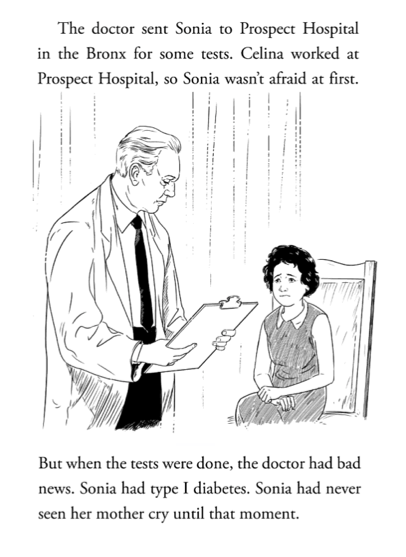
Literary Power Excerpt

Literature: "Little Women" (Abridged vs Unabridged)
Diluted Excerpt
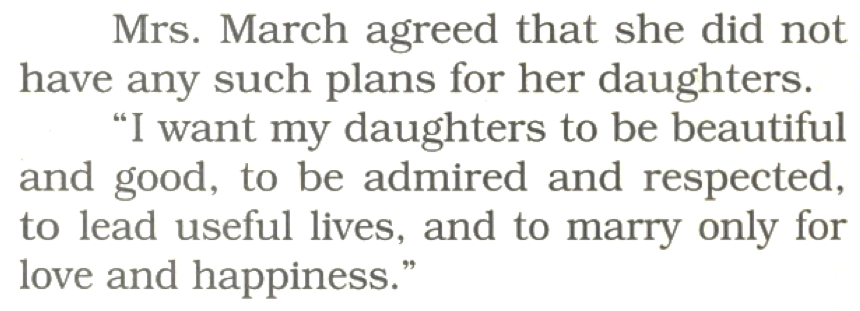
Literary Power Excerpt
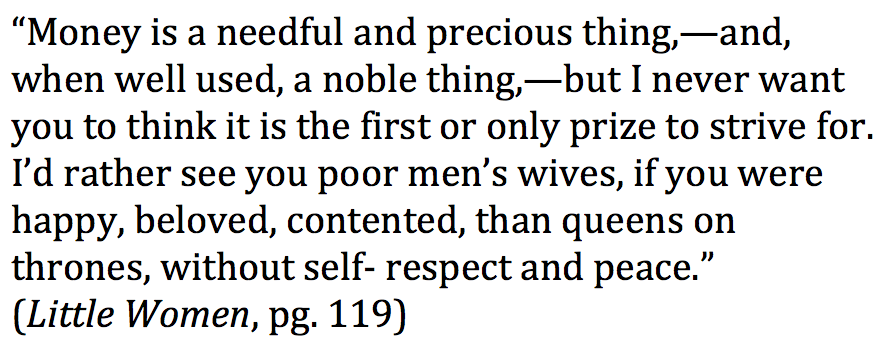
Side Note: As a result of my then fourth grader reading “Little Women”, she began to emulate Louisa May Alcott’s writing, which was just delightful to read. What’s more, she began to become aware of her responsibility to our family in the home.
Here’s a little note I came home to one day, written by my daughter. To many, it may look like just a simple note. To me, as her mother and home educator, I saw the following: rich language, script, ink pen, old stationary paper, letter writing AND the cleaning up of her room!!! All without being told to do so!! I call that living ideas coming to life in the heart and mind of a child.

FINDING THE RIGHT LIVING BOOKS
Finding the right books may be challenging but it is not impossible. It’ll take work on the parents’ part. You must be proactive in searching for the necessary books.
There may be those times when you simply cannot find the right living book for a particular area of study. That is when you do the best you can with what you find at the moment.
I’ve compiled an ONGOING LIST OF MULTICULTURAL HISTORY BOOKS as well as a Multicultural Book of the Month that may help you in getting an idea of what multicultural, modern living books look like.
For more diverse book recommendations, you can find links to other phenomenal resources in my MULTICULTURAL BOOKS section.
Min Hwang also has an extensive list of living books resources in her post “Planning for the New School Year”.
SO WHO DECIDES WHAT’S A LIVING BOOK ANYWAY??
The answer to my question “Who Decides What’s a Living Book Anyway?” is simple:
You.
You decide what’s living literature in your home.
If it meets Miss Mason’s guidelines, then for your family, it’s a living book.
Free CHECKLIST of "Miss Mason's Guidelines for Living Books"
I’ve included below a printable checklist with Miss Mason’s Guidelines for Living Books that you can keep handy as a reference when you’re unsure if a book is living for your family or not. Just click on the button below. Hope it helps!
*Living Books- quality, narrative writing that brings a subject to life
**Twaddle- trivial; foolish speech or writing; nonsense
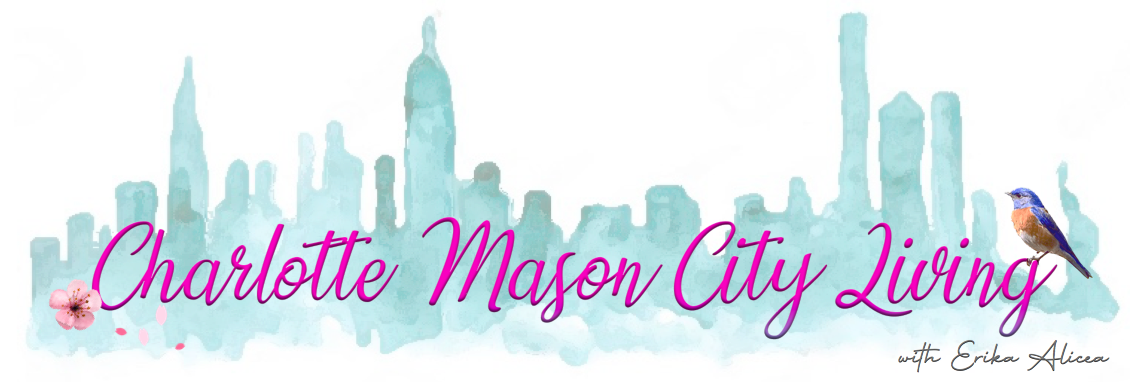
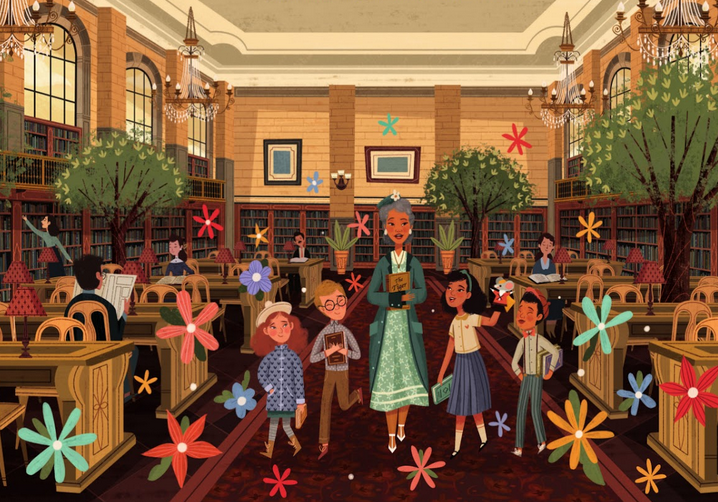
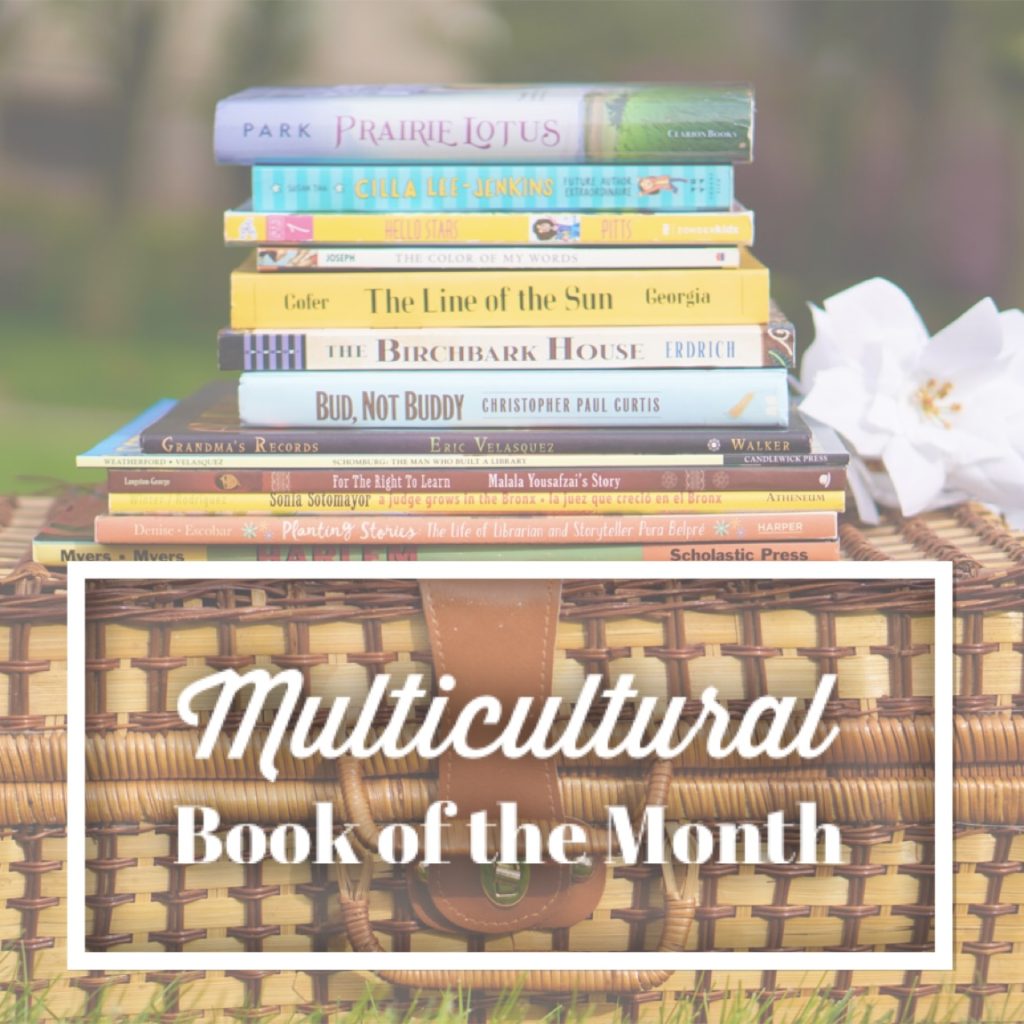
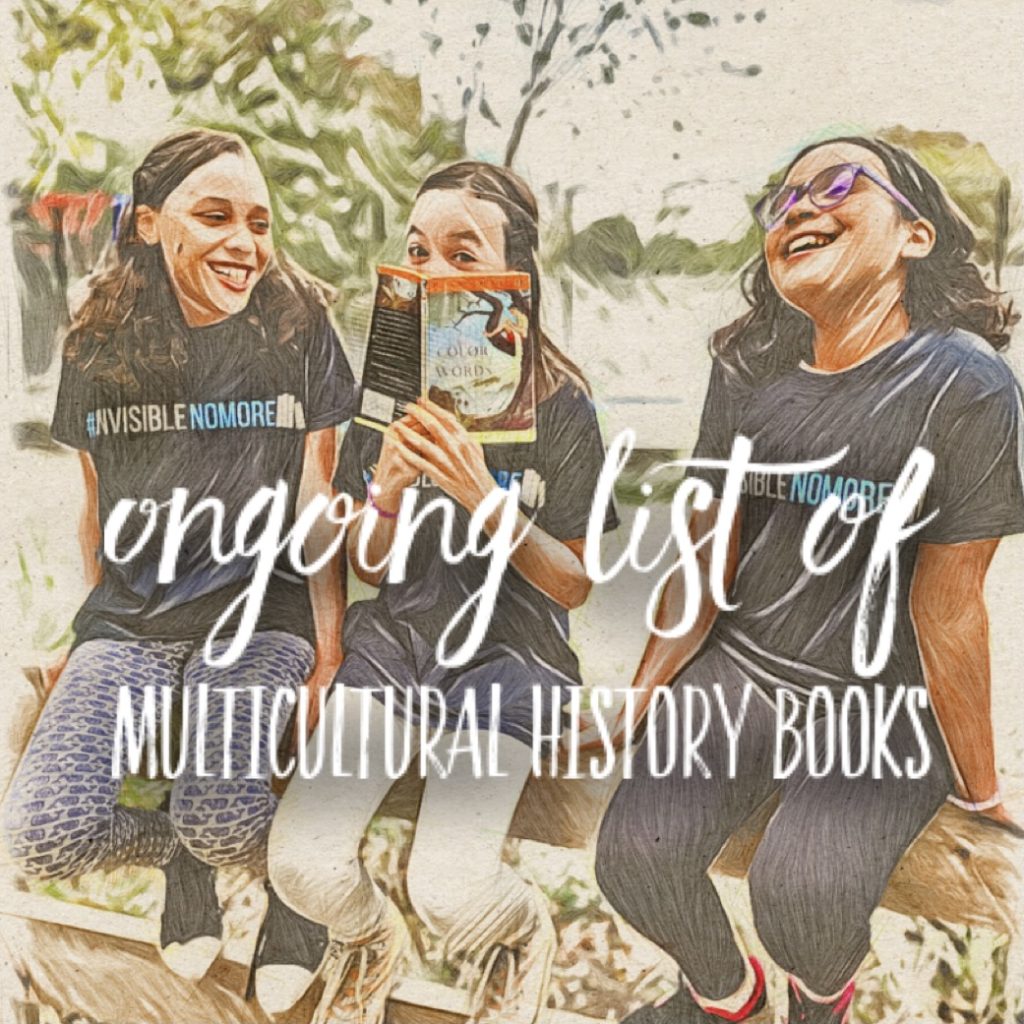

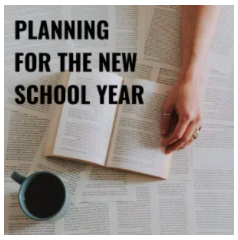
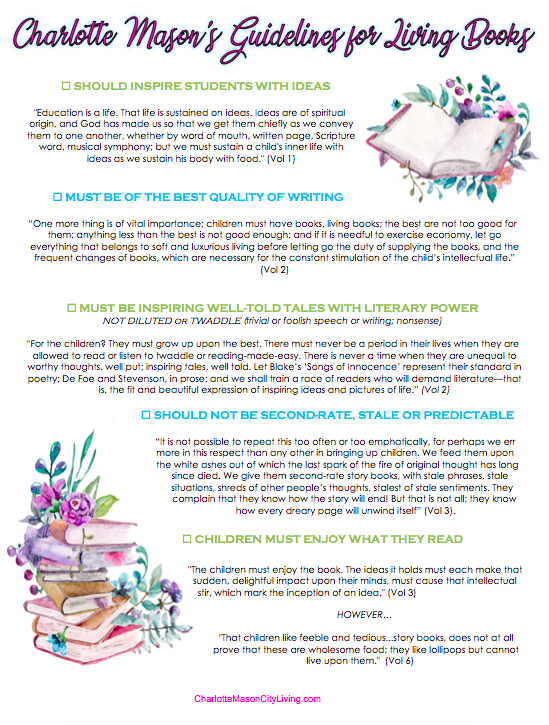
I’m pretty speechless, but I’m still going to write here anyway. I seriously feel emotional over this post. It feels incredible to read that someone I respect is saying out loud that the books I need for my children are good. Not just acceptable if nothing better is available but actually good. Thank you, Erika.
Amen! Thank you Amber! It’s been quite a journey for us both but as long as we keep studying her methods and principles, I think we’ll continue to be affirmed in the Holy Spirit-led work we’re doing with our children.
Love this!
Thank you Betsy!!!
Thank you so, so much for this exquisitely detailed post! I’m still working my way through the six volumes so it helps me immensely to see all the quotes you’ve drawn from places I haven’t reached yet. It’s very reassuring as someone trying really hard to create a rich and inclusive education that CM can provide the space for modern, multicultural literature, as some CM homeschooling I’ve witnessed is very white Eurocentric and can feel quite exclusionary, which initially put me off. It’s been wonderful finding both yourself and Amber @ Heritage Mom to see just how beautiful the philosophy can be and how it can be for, reflect and celebrate all cultures and differences. As you say, living books speak to our common humanity. By going back to the core volumes as you have, we can see the evidence plainly for up to date living books that reflect the world as it is now. Perhaps the books we read now our grandchildren will consider classics! You’re a gift to the whole community. Thank you xx
Jen, thank you for your encouragement! Being introduced to CM’s philosophy was such an answered prayer for me but in areas of history and literature, it was such a rocky start. But the more I read her work and learn about her methods, all the puzzle pieces are coming together, perfectly fitting our diverse family. Thank you for all the effort you’re making. It’s so worth it. It’s worth it for your kids and your entire family, including you. We’re going to look back at this when we’re little, old ladies and smile as we read the “new” classics to our grandchildren. 😉
“Classics didn’t start off as classics.”
This is a universal concept. One that transcends books. This goes for poetry, art, music, and a host of other things. Unfortunately, we apply “classic” to things created long ago; time makes something a classic. But instead, we should apply what I read here, that it’s how one is affected by, in this case, books, in my case, it’s usually music. When I listen to one of my favorite rap songs ever, “My Clothes, My Hair” by Ambassador, my heart is moved and my mind is sparked in so many ways.
I love how you also empower us to be ABLE to make the decision. Relating that to books and Charlotte Mason, following the criteria and making decisions…we are empowered.
Great job Mrs. Alicea!!!
Wow. You took it to another level in applying these guidelines to music. But it makes total sense because all the arts come from God. He speaks to our hearts in unique and diverse ways because He created us uniquely different. Thank you for sharing such beautiful insight. I definitely think it’s CM-approved response. LOL
Erika, I am so blessed by your passion to guide mamas in their homeschool journey, particularly, ensuring that homes have opportunities for diverse, multicultural education based on Miss Mason’s philosophy. Thank you for this article and the invaluable, concise information offered. It’s priceless!
Thank you for your words of encouragement Ana! It means so much to me!
This post was so freeing! Thank you dear friend for all the time and effort and love put into crating this amazing reference and resource! Also, thank you for giving us permission to spread these beautiful words in Portuguese. This is an invaluable resource for the Brazilian CM community!
Mariana, thank you for allowing me the honor to share with the Brazilian CM community and for all your help in my own CM journey from the beginning!
What an inspiring post! I am a brand new homeschooling mama (as of April) and have been so overwhelmed navigating my way. I have been so heavily gravitating towards Charolette Mason and her incredible views. Books have been my saving grace. Your post has helped me in so many ways, thank you.
I’m so happy to read this Gina!! Homeschooling, like motherhood, is so rewarding yet challenging. But you can never go wrong with reading living books with your child. 🙂